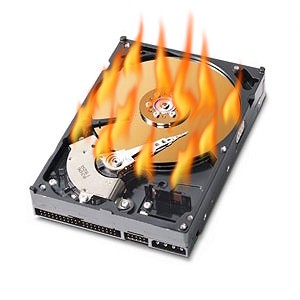Hard drive failure can be quite devastating for most people. Our hard drives are typically full of important files like personal information, photos, audio files and videos. Few people fail to realize just like any other electronic devices, hard drives have a limited life span as well. The average lifespan of a stationary hard drive is about 5-10 years. Fortunately, your hard drive will start to show signs of failure before facing a fatal failure, which will give you a chance to react. There are plenty of signs and symptoms you can keep an eye and ear out for, those include the following:
- Computer Freezes- If your computer hard drive is about to fail you will find your computer slowing drastically and freezing constantly. If your computer is freezing while trying to access particular files, you should shut down and restart your computer. If your computer still freezing while trying to access that same files, you may be experiencing hard drive failure.
- Corrupted Data- If your files are starting to disappear or are failing to open even though they were saved with no error, you should worry a bit. This could be a possible sign of gradual hard drive failure.
- Strange Sounds- When you start hearing noises coming from your hard drive such as clicking or grinding, that’s when you should really start worrying. This very common sign of a failing hard drive is known as the click of death.
- Chkdsk Command- This is another common sign of a failing hard drive. If every time you start up your computer, it automatically runs the Chkdsk command while its booting up this may indicate hard drive failure.
If your computer is having any of these issues or any other issues you know are a problem, call Up & Running Computer Solutions in Corona, CA at 951-737-8558. For more information about our company and our services visit our website at www.urcs.net
Proudly serving Corona, Riverside, Chino, Onatrio, Anaheim, Irvine, Newport Beach, Tustin and all surrounding areas.

